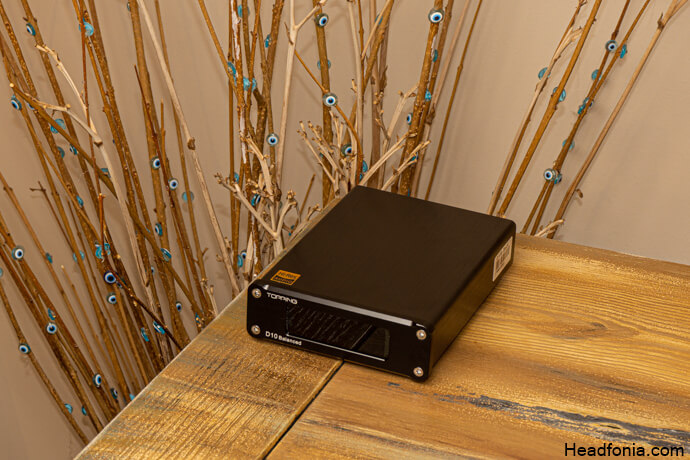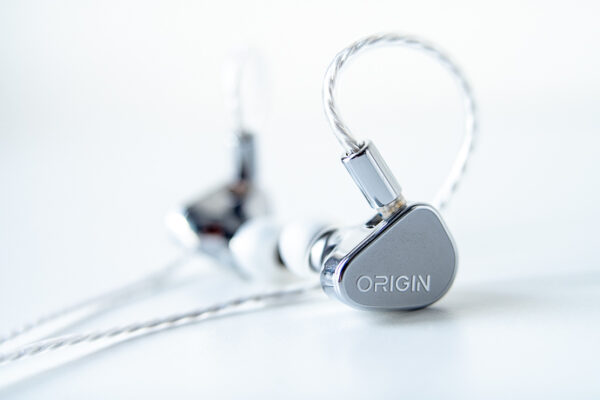Usage
First of all, the D10B is very easy to use. Since it is a plug-n-play device, it is ready for use as soon as you connect the cable using any input. The device has many different uses. For example, you can connect your active speakers directly using XLR to XLR cables and give a nice boost to the sound quality of your speakers. The balanced TRS to XLR adapter will come in handy here.
If you want to connect the DAC to your headphone amplifier, you have two options. You can hook it up using a TRS to TRS interconnect cable or with the help of the XLR adapter. If you are using an AMP that utilizes TRS, such as the Topping L50, you can also aim for maximum efficiency by directly using a TRS to TRS cable. I’ve been trying Topping’s TCT1 interconnect cable for a few days now and I can say that I really like the build quality of it. If you don’t have a TRS interconnect cable and plan to use two TRS devices, I recommend you to take a look at it. Another point you should know about the D10B is that the balanced TRS output cannot be converted to single-ended. Topping is very clear on this matter, they state that this conversion cannot be made with any adapter, so if you have such a plan, know that Topping advises against it.
As you know, Topping’s orange screen is quite famous. It is good news for me that they do not give up on this screen in this budget device. I really like the orange font, it gives me a retro feel and I am sure that many of you think the same way. Compared to the E50, D10B’s screen only provides information about the active sample type and rate. Unfortunately, the status information of the inputs and outputs is not displayed on the screen.
The unit comes with an auto-standby feature, it will automatically enter the standby mode if it fails to recognize a valid signal from the source. Plus, some DACs introduce pops and noise while switching from standby to operational mode but D10B is dead silent while doing that switch.
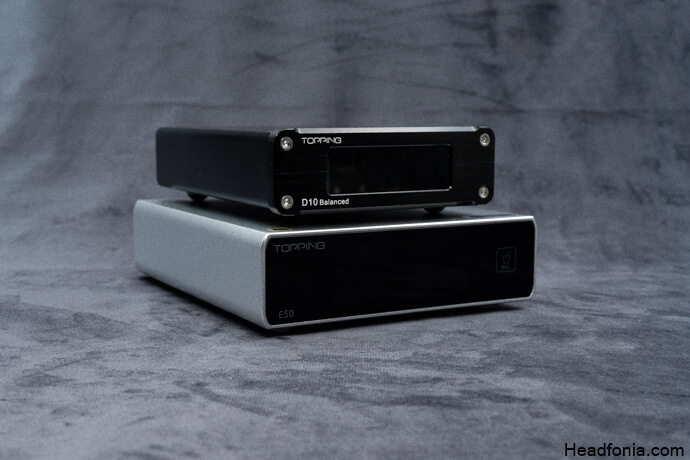
Performance & Sound
In this section, I will describe the DAC’s signature. For this test, I am pairing the DAC directly to my daily driver active reference monitors. I will also pair the DAC with several headphone amplifiers to evaluate.
The D10B sounds immensely clean for a DAC that costs a little over a hundred bucks. I was impressed from the first moment I listened to it. The sound I heard was clean, neutral, and very detailed for the price. The signature is neutral with slight hints of warmth in the lower end of the spectrum. The D10B is controlled, the headroom is defined and the instruments feel natural. Topping may have built this device to prove to us how much they’ve improved in DAC design and if that’s the case then I have to commend their achievements.
If you’re using active speakers priced higher than the D10B, I suggest you try this product before looking for an expensive alternative. Many western brands still charge premium prices for products of similar performance. Since the price-performance ratio is really impressive on the D10B, I would at least recommend you to try this with your speakers or headphone amp before purchasing a higher-priced unit.
I think it will satisfy many audiophiles in terms of sound quality and performance. At the same time, I should point out that it is limited in features. It does have a Bluetooth module, MQA or it does not support the highest sample rate file types such as the DSD512, 1024, etc. This is the compromise you will have to make. Everyone’s wants and needs are different in the audiophile community, and understanding these well will prevent you from spending unnecessary money, so do take some time to consider the pros and cons.
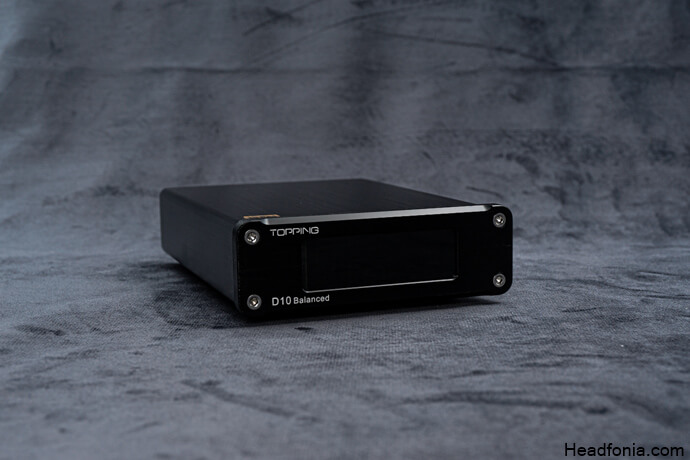
In this paragraph, I will be pairing the Topping D10B with the L50 amplifier using a TRS interconnect. First off, the pairing sounds clean. The female vocals are crystal with a good amount of air and body. The low end is tight, rounded and the impact is good. Slight added warmth helps the D10B deliver harder and rounder hits. The PRaT is good, the DAC handles congestion well for the price. The attack and decay rate is also good, the DAC feels solid, technical-wise. The bass texture feels natural, it does not feel elevated or artificial. The midrange is clean and articulate as I mentioned and the note weight is good. It does not feel particularly thin or thick. The D10B does not have the same organic timbre as the E50 but it’s the best I’ve heard from DACs around the 100 USD mark.
Let’s talk about the treble. The D10B has this treble range that follows and works harmoniously with the midrange. The control is impressive here, the quantity is perfectly adequate. It is clean, expansive yet smooth. Combining this unit with a good value headphone, such as the modded 58X could result in hours-long listening sessions of Diana Krall, Melody Gardot, or/and Norah Jones. The resolution is impressive here also, for its price, the D10B did not disappoint me at all. Topping definitely slashed the feature set to give it a competitive price tag but luckily, the D10B provides solid sound performance.
The D10B offers a spacious presentation with adequate space between instruments, however, don’t expect miracles here, it does not offer the best depth although it can provide good imaging when paired with equally capable equipment. The stage does not feel cramped and as I mentioned earlier, the D10B handles congestion just fine.
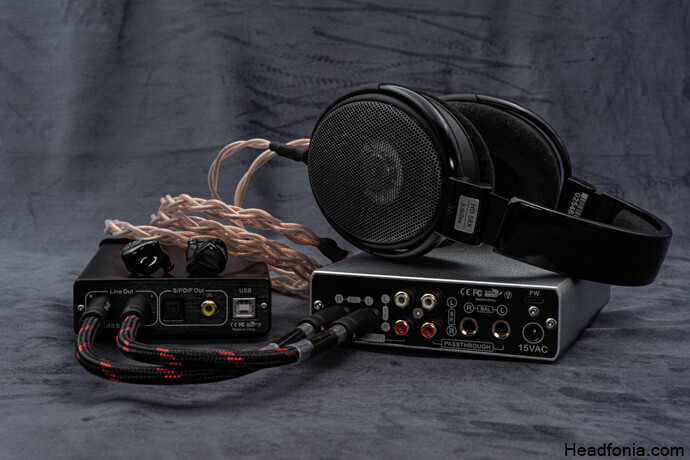
Comparison
vs. E50
The Topping E50 offers a richer feature set compared to the D10B and it is a direct upgrade to D10B in terms of performance. It has SE-RCA outputs in addition to balanced TRS. The E50 also comes with remote control support and features a menu. Sound differences can be easily heard A-B’ing two devices. The E50 has higher resolution, more detail, and offers better micro-detail retrieval. The stage width and depth are better also. The most obvious difference between the two is that the E50 has a more natural timbre. The instruments sound slightly meatier and more realistic in comparison. The E50 offers a neat soundstage and handles congestion better, due to its superior PRaT performance. There are a hundred bucks between two devices and you can’t really go wrong with either, they both offer excellent value for the price.
Last Words
We have been witnessing Topping’s success together, especially in the last 1 year. They have succeeded in being a company that appeals to many different price ranges from $100 to $1000 and constantly adopts new technology and features. I think the D10B will be a very competitive option in the $100-150 price range and I believe it is a product that raises the bar for rival companies in terms of both build quality and sound performance.
If you need a DAC with a similar feature set, I suggest you give the D10B a shot before spending any big bucks. It may surprise you in a good way.
Page 1: Topping, Topping D10 Balanced, Packaging & Accessories, Design & Build Quality, Technology & Features
Page 2: Usage, Performance & Sound, Comparisons, Last Words





